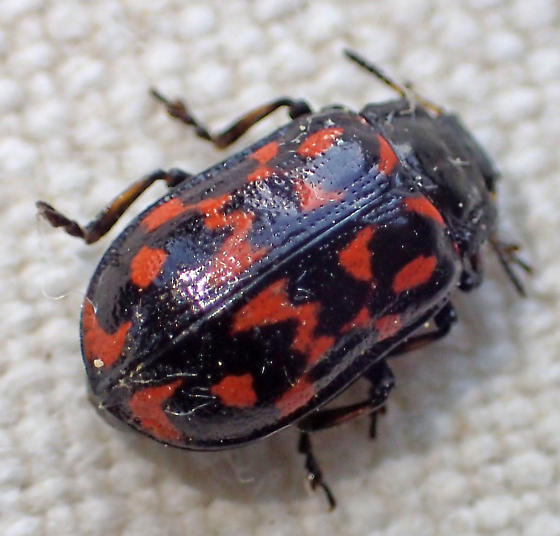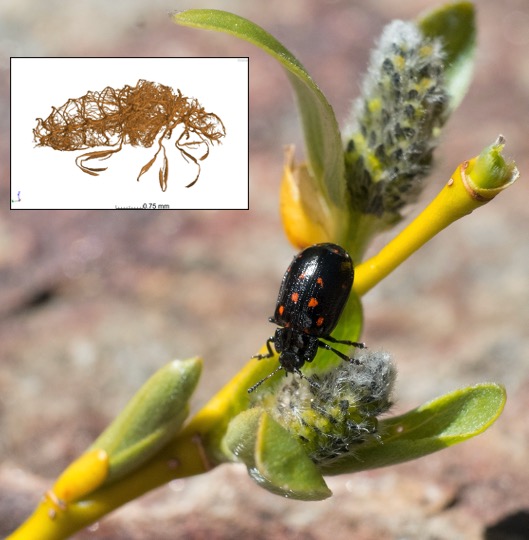
Team Beetle
The willow leaf beetle Chrysomela aeneicollis lives at high altitude in the South-central Sierra Nevada, from near Mount Whitney to Yosemite. This California insect has been the focus of studies of ‘Evolution in Action’ since the 1980s, when Dr. John Smiley (former WMRC station manager) and then graduate student Nathan Rank conducted experiments examining relationships between beetles, willow host plants where adults and larvae feed, and the insect enemies that prey upon the beetles.

In 1998, Dr. Nathan Rank, now a Professor of Biology at Sonoma State University, was joined by Dr. Elizabeth Dahlhoff of Santa Clara University to study how beetles tolerate and survive exposure to environmental extremes. Throughout the years, Dahlhoff and Rank have led a team of mostly undergraduate researchers (over 120 to date) in this project.
In 2014, Professors Caroline Williams and Jonathon Stillman (U.C. Berkeley) and their students started studying Sierra willow beetles as a model to unlock the mysteries of winter, an understudied facet of the life cycle of many insects. Williams and her team are conducting experiments to determine how changing snow cover impacts energy use and cold stress of these beetles during winter dormancy; they also developed educational materials for K-12 students for studying the evolutionary significance of genetic variation in nature —hosted on the Understanding Evolution website, UC Berkeley.
Over the decades, experimental approaches used by ‘Team Beetle’ have progressed with advances in experimental physiology, molecular biology, genomics and computer-based landscape analyses of environmental data. Their studies have revealed a complex interplay between the genetic heritage of beetles colonizing the high Sierra and local temperature and climatic conditions. Prof. Rank’s early studies showed that Eastern Sierra populations differ genetically at a key metabolic enzyme locus, phosphoglucose isomerase (PGI), an enzyme essential for all living organisms.
Northern beetles differ from southern beetles in the structure and function of the PGI enzyme, and his work with Dahlhoff showed that beetles with southern PGI enzymes are able to cope with warm temperatures more effectively than those with northern PGI enzymes.

More recent studies show that genes in the beetles’ mitochondrion, the organelle responsible for efficient energy production, affect beetles’ ability to thrive at high elevation, which has led the team to explore how beetles with different genetic compositions cope with the interacting stresses of fluctuating temperatures and limited oxygen supply. Their current work has expanded to studies of adaptive variation in the entire beetle genome.
Sierra willow beetles were selected as one of only one hundred species to represent natural genetic variation in California, as part of the California Conservation Genomics Project.
WMRC has supported this research since its inception.